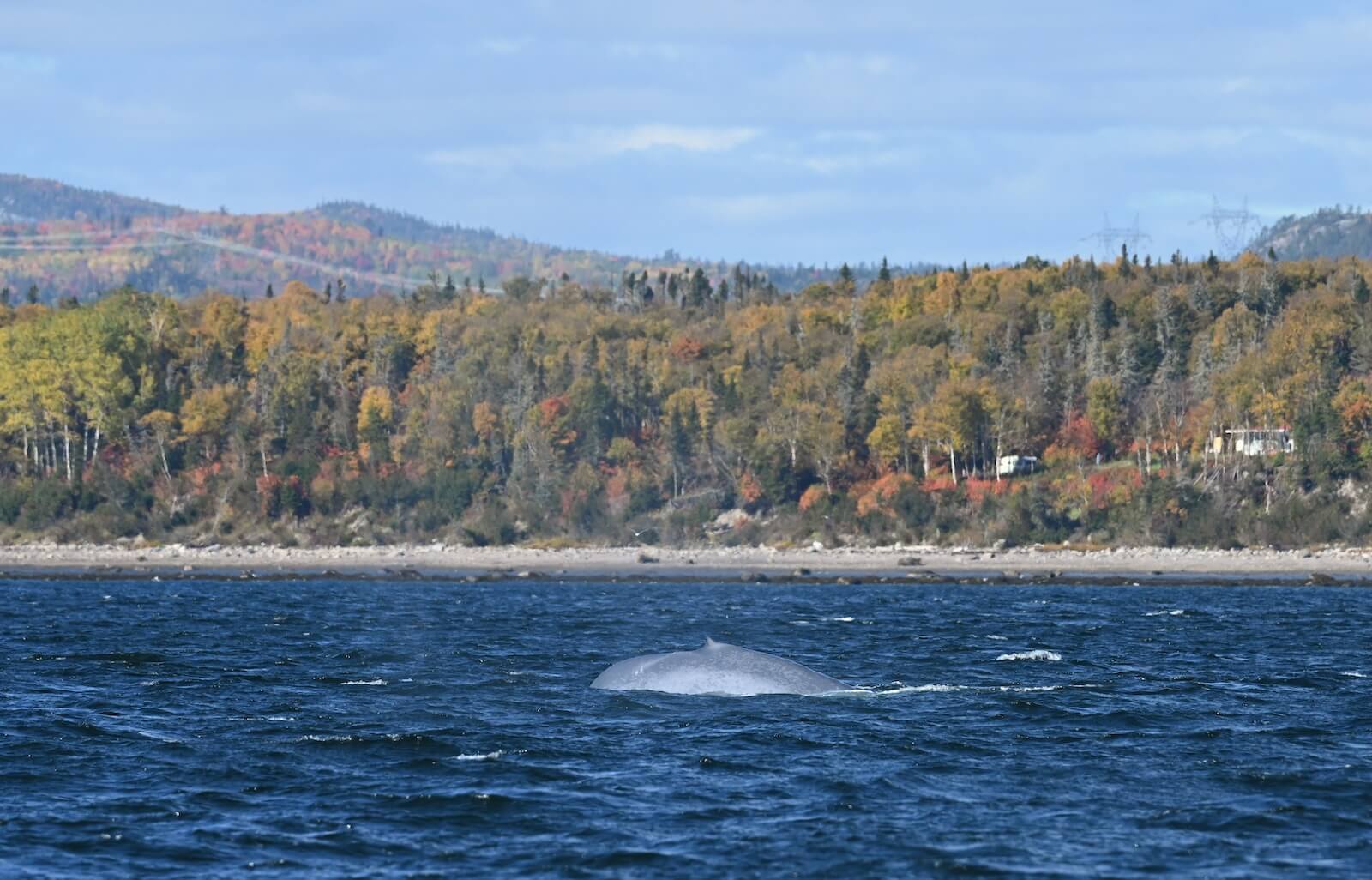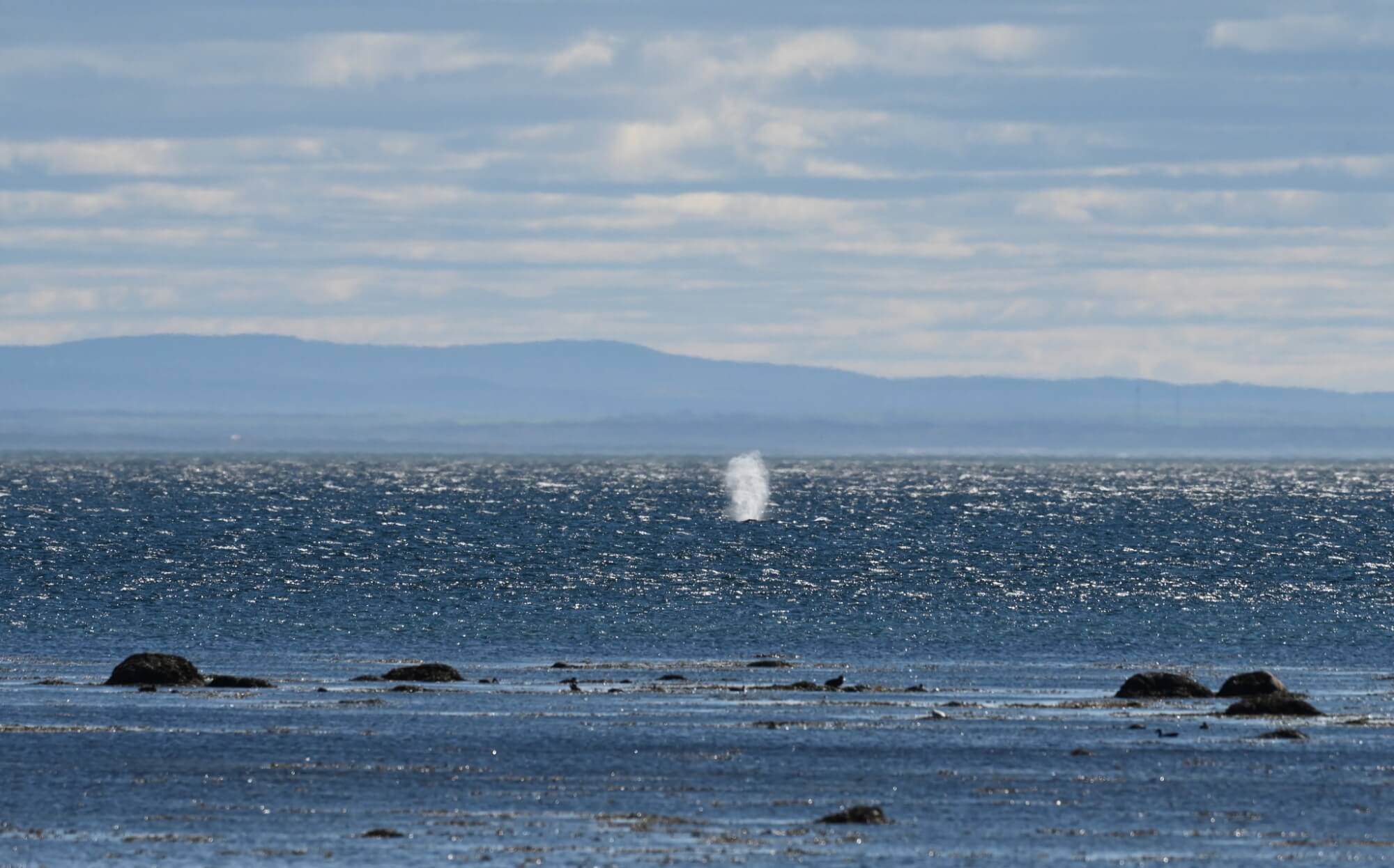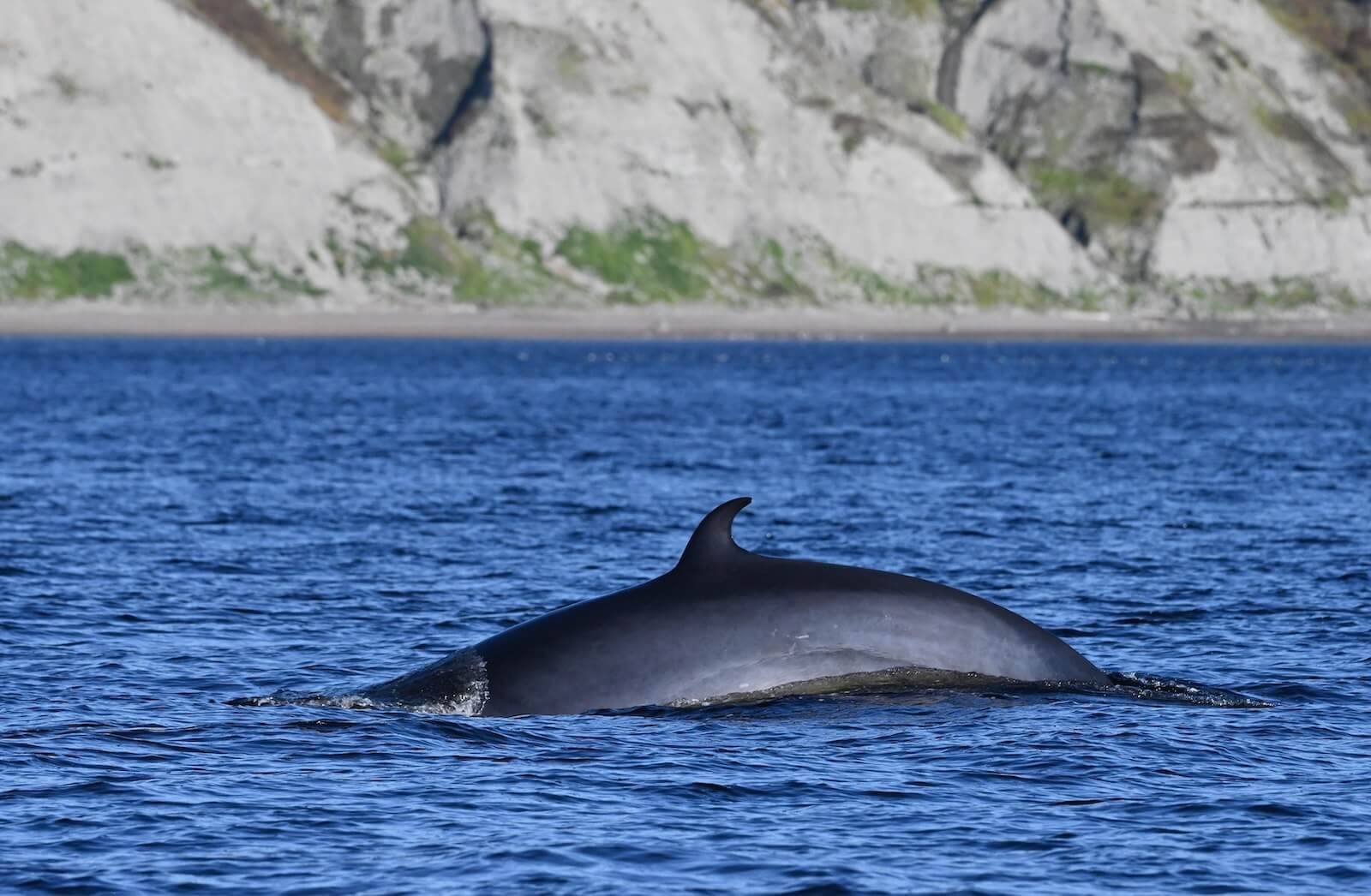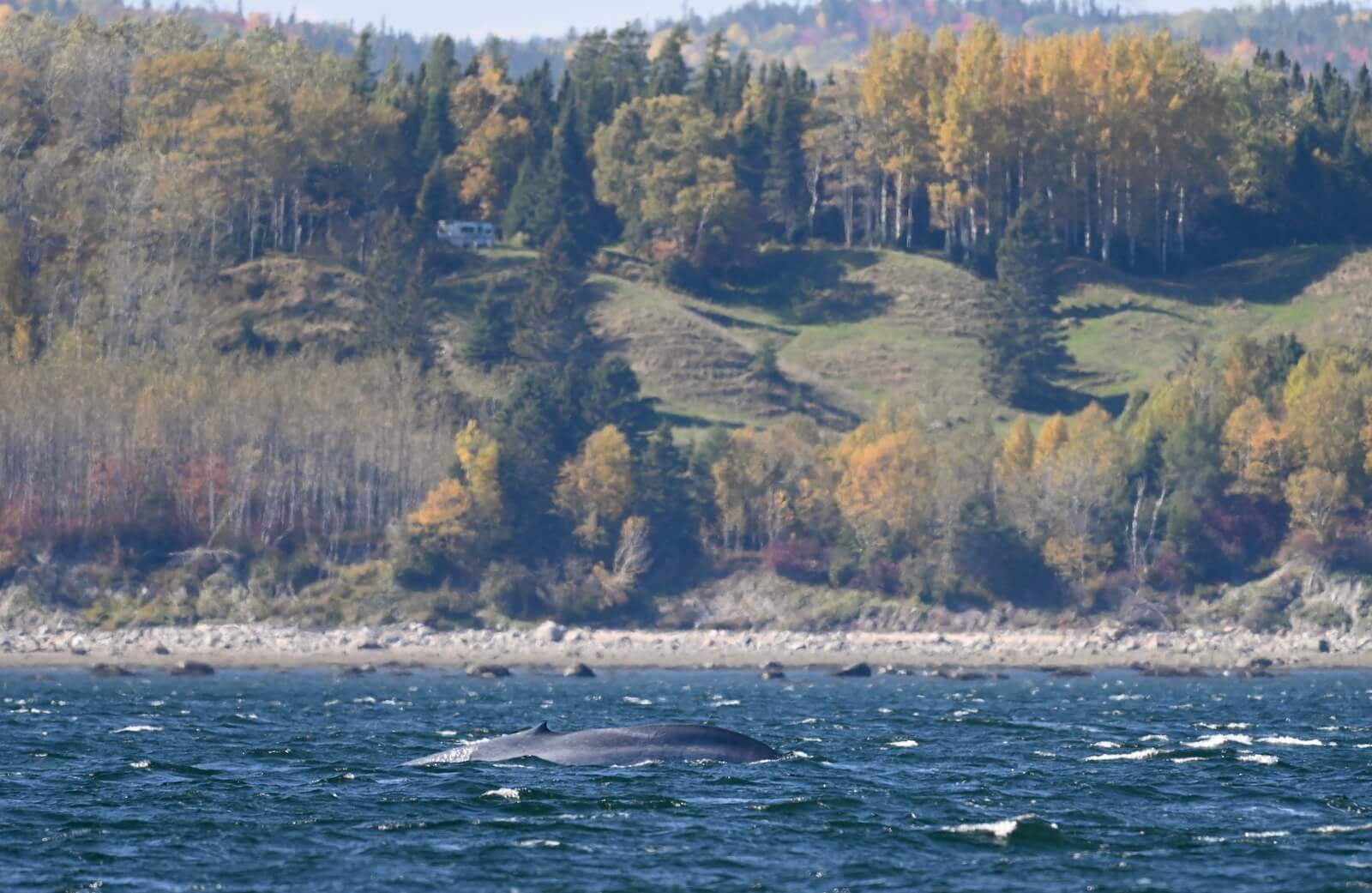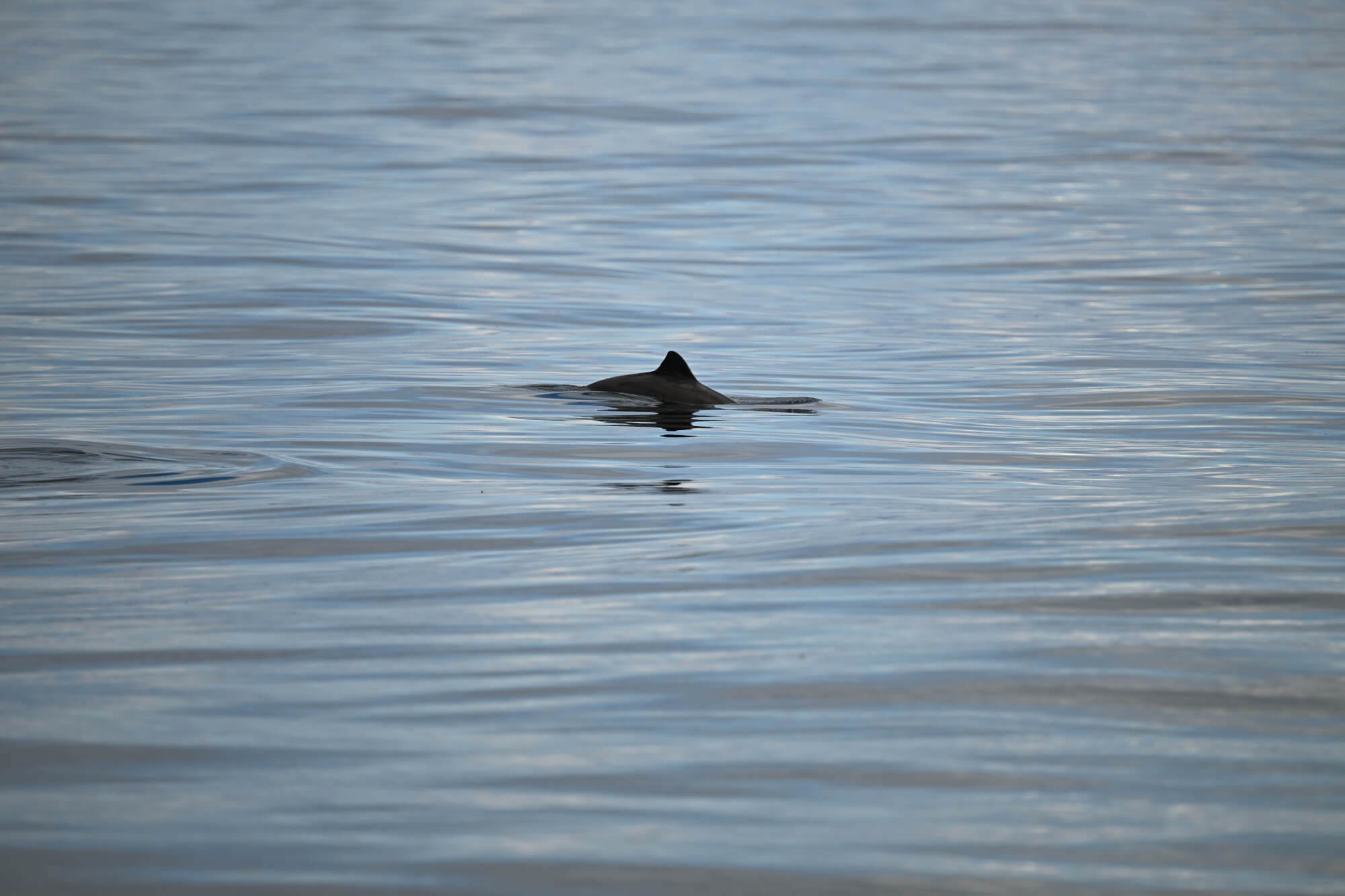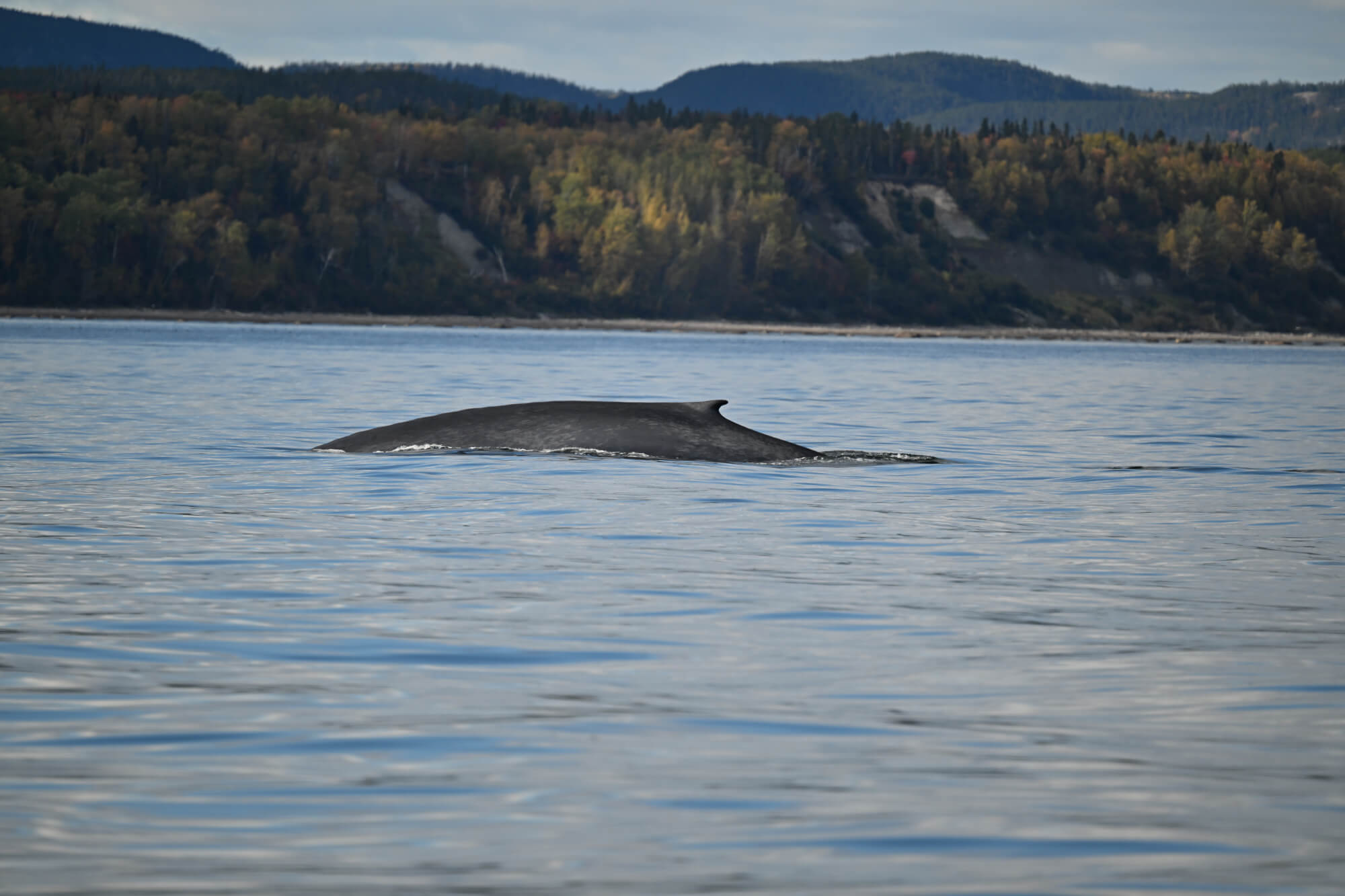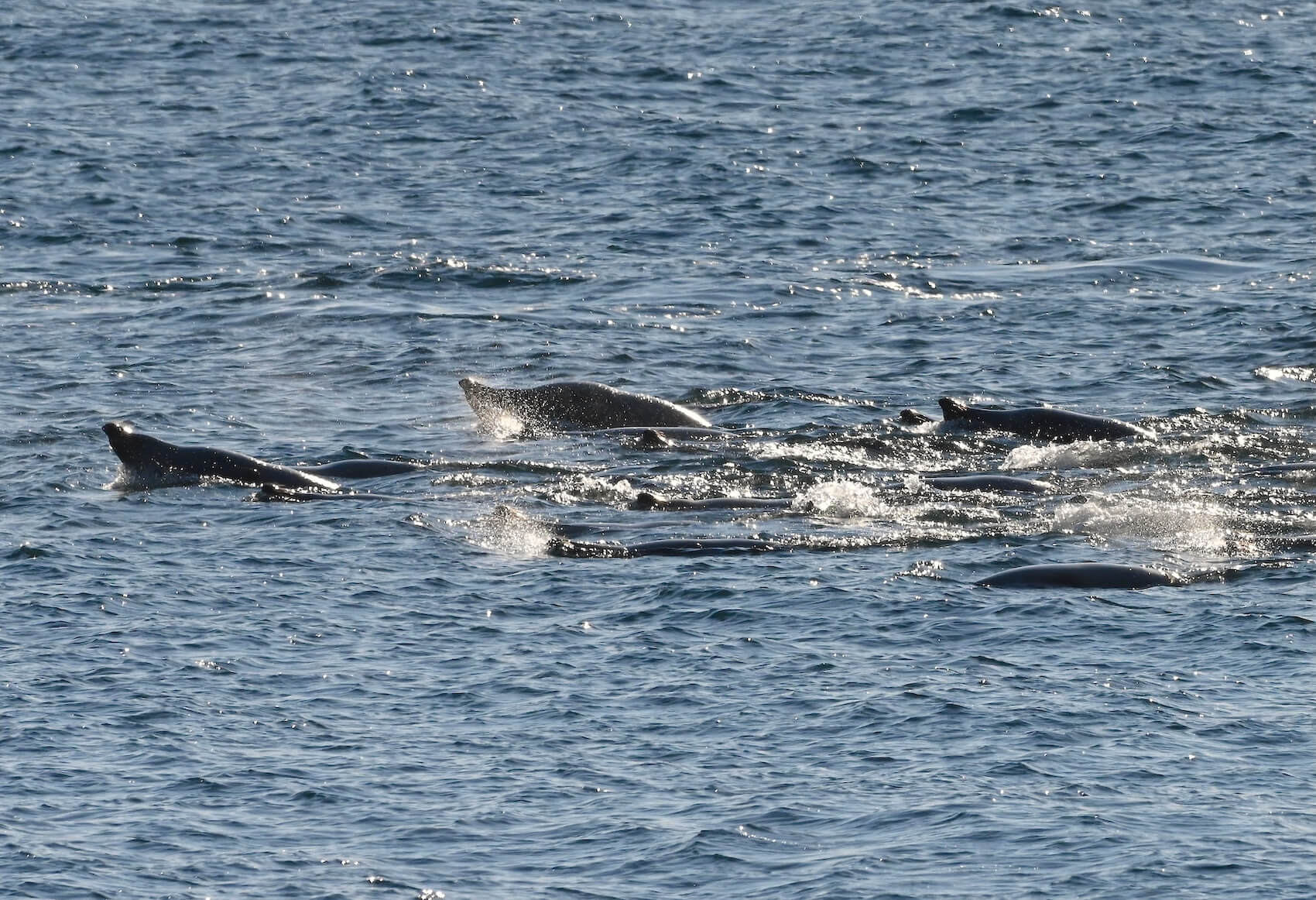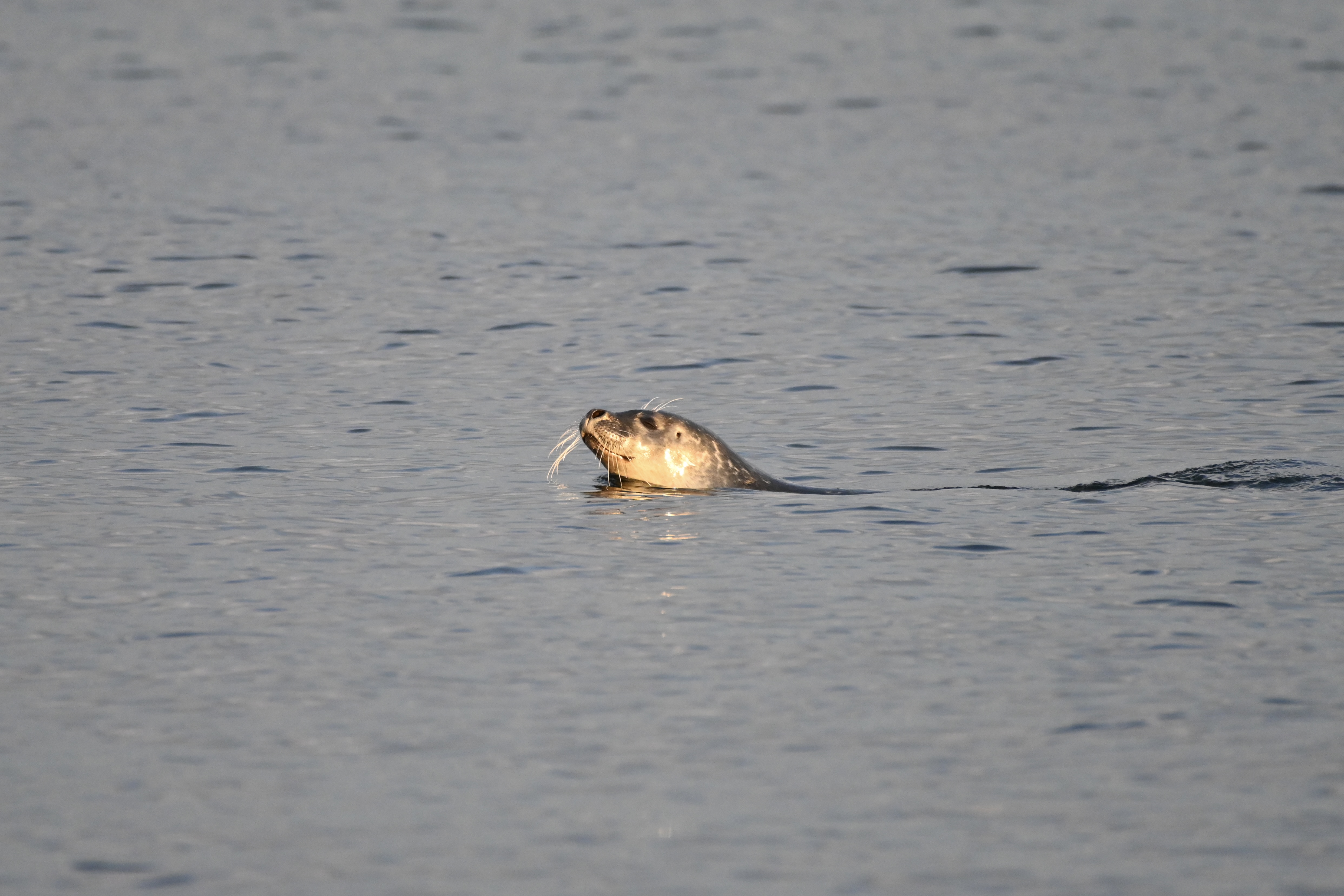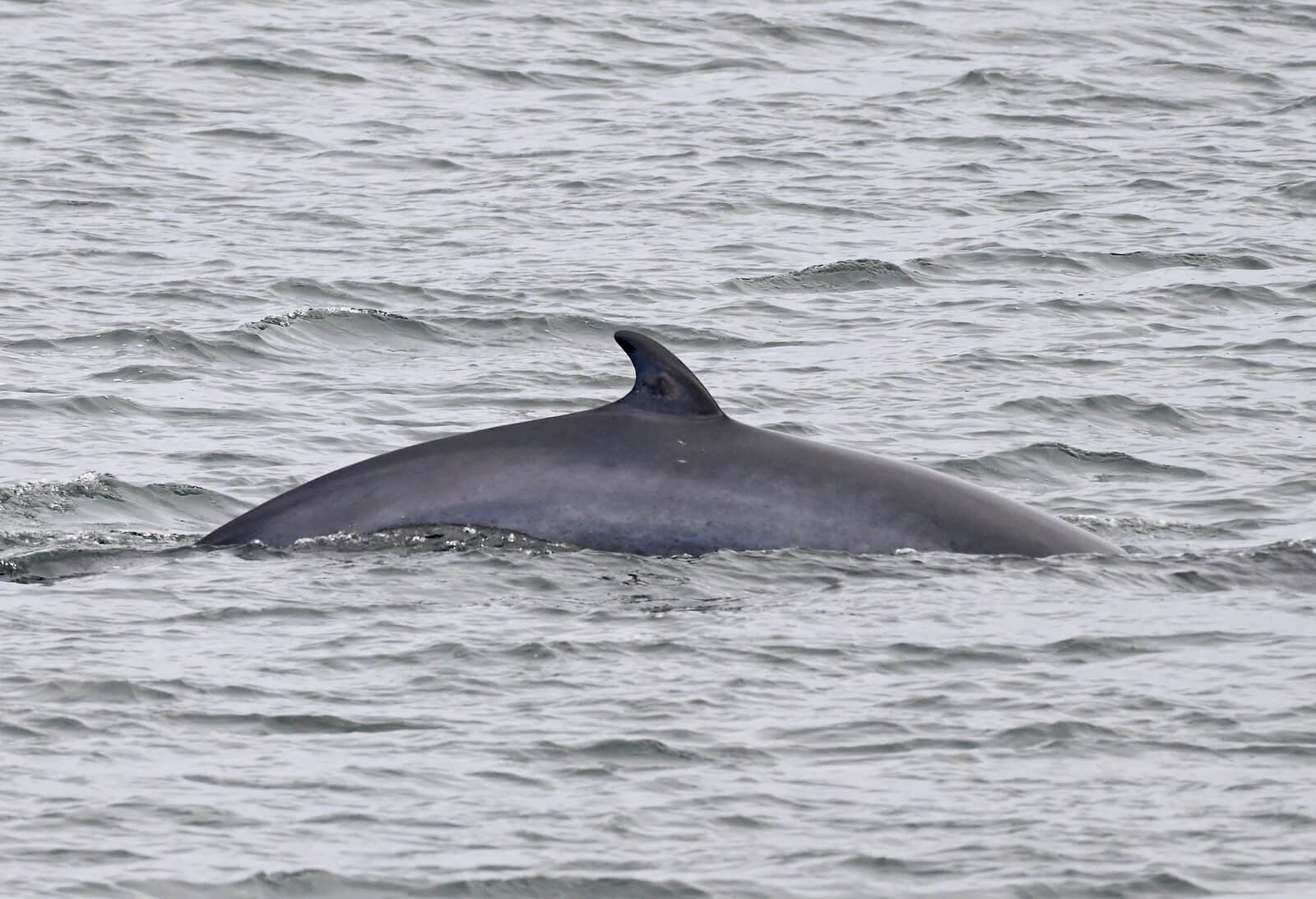While Quebec’s forests are gleaming red, orange, and yellow, the St. Lawrence should not be overlooked either, as its autumn waters harbour a diversity of fins and backs of all sizes and colours. From belugas passing by the windows of the Marine Mammal Interpretation Centre (CIMM) to white-sided dolphins in Gaspé Bay, not to mention the spouts of blue whales, the St. Lawrence River is still teeming with life as we transition into October.
Marine sightings near CIMM and Les Bergeronnes
Three minke whales were observed at close range in front of the Marine Mammal Interpretation Centre (CIMM). “On Monday, there were good numbers of belugas passing by throughout the day,” says one of the centre’s staff. When the water is calm and their white backs stand out against the fall colours, it’s truly awesome!”
In Les Bergeronnes, a local resident woke up to the breaths of Zipper and Ti-Croche, two well-known fin whales. With its powerful blows, this species can often be detected by ear even before any animals are spotted. This unusual wake-up call illustrates just how much the presence of cetaceans shapes the daily lives of local residents.
Dolphins, fin whales, and... feces!
On September 29, a wildlife photographer spotted about ten white-sided dolphins east of Les Bergeronnes. In the Saguenay–St. Lawrence Marine Park, the diversity is particularly rich, with belugas, harbour porpoises, and blue, fin, minke and even a humpback whale having been reported.
This same photographer documented a more unusual aspect of cetacean life: humpback whale feces. Even if it is unappealing at first glance, whale poo is nevertheless essential from a scientific perspective. By analyzing this excrement, scientists can better understand the whales’ diet, assess their health, and even measure their contribution to marine ecosystems. Indeed, by releasing nutrients into the water, whales help fertilize the ocean and promote the growth of phytoplankton, which in turn benefits the entire food chain.
News from Mingan and Gaspé regions
The Mingan Island Cetacean Study (MICS) reports some nice encounters during its most recent trips out to sea on September 22, 24, and 25. About fifteen fin whales were observed, as were three identified humpbacks (H128, H1038, and H1060). An added surprise was the presence of three North Atlantic right whales!
In Gaspé Bay, cetaceans have also been abundant, with two humpbacks, two fin whales, a few minke whales, and about forty white-sided dolphins reported. Rounding out the picture are the seals that are always faithful to their favourite hangouts.
Throughout the region, the whale-watching season continues
Observations reported via the platform Navigation Baleine show that marine wildlife is present throughout the St. Lawrence. Highlights include:
- A fin whale in the far east of Quebec, in the waters of Middle Bay.
- About thirty seals off Havre-Saint-Pierre.
- West of Anticosti Island: five harbour porpoises, three minke whales, twenty grey seals, and even a right whale.
- Off Sept-Îles: four harbour porpoises, three minke whales, and six fin whales.
- Between Les Escoumins and Les Bergeronnes: a humpback whale, a grey seal, and a harbour porpoise.
- Off Isle-aux-Coudres: a group of five belugas.
From the largest species to the most discreet, the St. Lawrence has been showcasing its richness and its role as an ecological corridor.
The autumn river is a symphony of colours and breaths that reminds us that this waterway is not just a landscape, but a complete ecosystem.
Where are the whales this week? Observation map
These data were reported by our network of observers. They give an idea of the presence of whales and in no way represent the actual distribution of whales in the St. Lawrence. Just for fun! Click on the whale or seal icons to discover the species, the number of individuals, additional information or photos of the sighting. To enlarge the map, click on the icon in the top right-hand corner. The map works well on Chrome and Firefox, but not so well on Safari.
To display the list of sightings, click on the icon in the top left-hand corner.
Thanks to all our collaborators!
Special thanks go out to all our observers who share their love for marine mammals with us. Your encounters with cetaceans and pinnipeds are always a pleasure to read and discover.
On the water or from shore, it is your eyes that give life to this column.
- Marie-Andrée Charlebois
- Laeticia Desbordes
- Hélène Guitton
- Audrey Leblanc
- Pascal Pitre
- Renaud Pintiaux
- Diane Ostiguy
- René Roy
- Guillaume Savard
- Guy Synnott
And all the others!
Additionally, we would like to acknowledge the following teams that also share their sightings:
Centre d’éducation et de recherche de Sept-Îles (CERSI)
Station de recherche des Îles Mingan (MICS)
Réseau d’observation des mammifères marins (ROMM)
Réseau québécois d’urgence pour les mammifères marins (RQUMM)
Groupe de recherche et d’éducation sur les mammifères marins (GREMM)
Mériscope
Would you also like to share your observations?
Have you seen any marine mammals in the St. Lawrence? Whether it’s a spout offshore or just a couple of seals, drop us a line and send your photos to [email protected]!


